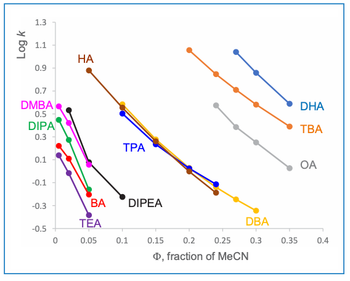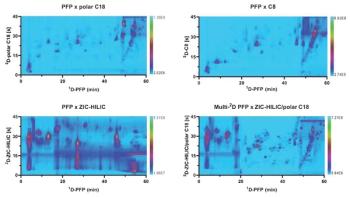Key Takeaways
- Phenolic compounds can offer vital insights into a person's dietary habits. While venous blood sampling is effective, it can be discomforting for patients.
- Dried blood sample (DBS) cards are believed to be an effective alternative approach, as they can lower biohazardous risk while enabling patient self-administration.
- In this study, the scientists aimed to develop and validate an analytical method based on volumetric absorptive microsampling (VAMS) and ultrahigh-performance liquid chromatography–tandem mass spectrometry (UHPLC–MS/MS) for extracting (poly)phenolic compounds in human capillary blood samples.
- The approach did prove effective, although not without limitations.
Researchers from the University of Lleida in Lleida, Spain created a new volumetric absorptive microsampling (VAMS)-based method for monitoring metabolities in human blood samples. Their findings were published in the Journal of Chromatograpy B (1).
Food intake biomarkers, such as phenolic compounds, can offer vital insights into a person’s dietary habits and how those can impact health outcomes. Phenolic compounds, which are naturally occurring molecules possessing an aromatic ring that bear at least one free hydroxy substituent or functional derivative, are important to track (2). As such, approaches for tracking these substances are needed. Traditional methods for quantifying biomarkers typically involve venous blood sampling, which involves a needle being inserted into a vein and remove blood samples for laboratory analysis (3). This can be discomforting and anxiety-inducing for patients, while requiring specialized personnel for execution.
One potential alternative approach is the use of dried blood sample (DBS) cards, which are believed to have lower biohazardous risk while allowing for patient self-administration. The dried blood on a card effectively inactivates proteins, pathogens, and enzymes, while reducing risks of bacterial growth and enabling the investigation of a wider range of pharmacokinetic times. However, hematocrit value variability can significantly impact blood spread on DBS cards, leading to inter-subject variability and potential inaccuracies in quantitative analysis. One way of addressing these challenges is volumetric absorptive microsampling (VAMS), a technique which uses a porous hydrophilic tip attached to a plastic manipulator, allowing precise blood absorption via finger prick. However, this technique’s application for collecting blood samples to assess pharmacokinetic of bioactive compounds, such as dietary (poly)phenols, remains understudied.
In this study, the scientists aimed to develop and validate an analytical method based on VAMS for extracting (poly)phenolic compounds in human capillary blood samples. This was followed by ultrahigh-performance liquid chromatography–tandem mass spectrometry (UHPLC–MS/MS). Finger-prick blood samples were collected from 11 healthy volunteers at multiple time points up to 48 h post-ingestion. To efficiently extract (poly)phenolic metabolites, various extraction parameters were optimized. The method was then successfully applied, detecting five colonic (poly)phenolic metabolites: benzene-1,2-diol-O-sulphate, 3-(4′-hydroxy-3′-methoxy)propanoic acid and its sulphated form, 5′-(3′,4′-dihydroxyphenyl)-γ-valerolactone-O-sulphate, and methyl luteolin-O-glucuronide.
Maximum adsorption occurred at 12 h for the majority of the metabolities, while luteolin-O-glucuronide showed two distinct peaks at 2 and 6 h; this indicated dual-phase absorption. When compared with venous plasma samples collected during the 0–6 h period showed no significant differences, validating VAMS’s statistical reliability as an alternative to venipuncture.
This approach could make it feasible to obtain multiple samples without causing participants significant discomfort, while also improving compliance and the quality of the collected data. The ability to collect comprehensive data is crucial for gaining better understanding of the bioavailability and physiological impact of dietary (poly)phenolic compounds and their potential therapeutic applications.
While VAMS has proven effective, the researchers did note certain limitations. For example, the method displayed low sensitivity for detecting generated (poly)phenolic metabolites, which are present at very low concentration levels. This mainly stems from the low extraction volume of 30 µL for capillary blood, compared to 1 mL that is typically extracted for venous blood samples. In addition, the scientists pushed for the storage and stability conditions of VAMS tips to be controlled to avoid potential metabolite degradation over extended periods. Finally, the method should be validated across diverse population groups and under various clinical conditions to ensure that it can be applied broadly and reliably.
References
(1) Cortijo-Alfonso, M-E.; Yuste, S.; Piñol-Felis, C.; Romero, M-P.; Macià, A.; Rubió-Piqué, L. Finger-Prick Blood Sampling Using Volumetric Absorptive Microsampling (VAMS) Method for Monitoring the Main (Poly)phenolic Metabolites in Human Blood After Barley Biscuit Intake. J. Chromatogr. B 2025, 1256, 124527. DOI: 10.1016/j.jchromb.2025.124527
(2) Phenolic Compound. ScienceDirect 2019. https://www.sciencedirect.com/topics/chemistry/phenolic-compound (accessed 2025-5-27)
(3) Venous Sampling. RadiologyInfo.org 2024. https://www.radiologyinfo.org/en/info/venous-sampling (accessed 2025-5-27)





